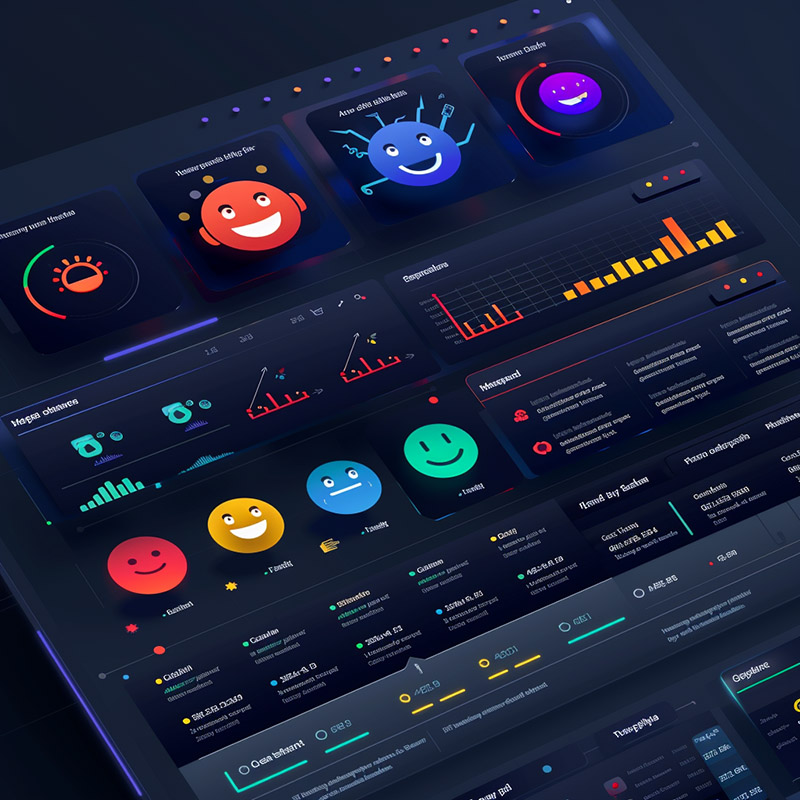1. Customer Insights and Personalization
AI analyzes vast amounts of data from customer interactions across various platforms to create detailed customer profiles, enabling highly personalized marketing strategies that cater to individual preferences, behaviors, and purchasing history.

Customer Assumptions Before AI
Marketers relied on broad demographic data and generic customer personas to craft marketing messages, leading to less effective campaigns that might not resonate with individual preferences or behaviors. This approach often resulted in missed opportunities for engagement and lower conversion rates due to a lack of personalization.
Customer Assumptions After AI
With AI-driven customer insights and personalization, marketers can now create highly tailored marketing strategies that speak directly to the individual needs and interests of each customer. AI analyzes detailed data from customer interactions to deliver personalized content, product recommendations, and marketing messages, significantly increasing engagement, customer satisfaction, and conversion rates. This shift has transformed marketing from a one-size-fits-all approach to a personalized dialogue with consumers.
2. Predictive Analytics
By leveraging machine learning algorithms, AI predicts future buying behaviors and trends, allowing marketers to anticipate customer needs, optimize inventory, and create targeted marketing campaigns that resonate with their audience ahead of time.

Prediction Before AI
Marketers traditionally relied on historical sales data and market research to forecast trends and customer demand. This approach was often reactive and lacked the precision and agility to anticipate rapid market changes, resulting in inventory issues or missed opportunities.
Prediction After AI
AI's predictive analytics has revolutionized marketing strategies by providing forward-looking insights based on real-time data analysis. Marketers can now anticipate customer behaviors, market trends, and potential demand shifts with greater accuracy, allowing for proactive campaign adjustments, inventory management, and strategic planning. This has led to more efficient and responsive marketing operations, ensuring companies stay ahead of the curve.
3. Chatbots and Virtual Assistants
AI-powered chatbots and virtual assistants provide real-time, personalized customer service and support across websites and social media platforms, enhancing customer engagement and satisfaction while reducing the need for human customer service representatives.

Customer Service Before AI
Customer service channels often experienced high volumes of inquiries, leading to long wait times and frustrated customers. The reliance on human customer service representatives limited the scalability and efficiency of customer support, especially outside business hours.
Customer Service After AI
AI-powered chatbots and virtual assistants have transformed customer service, offering 24/7 support across multiple channels. These AI solutions handle inquiries instantly, improve customer satisfaction through timely responses, and free up human representatives to tackle more complex issues. The integration of chatbots has significantly improved the efficiency of customer service operations, enhancing brand reputation and customer loyalty.
4. Content Generation and Optimization
AI tools can generate and optimize content, including email marketing copy, social media posts, and product descriptions, ensuring that it is tailored to engage specific target audiences and improve search engine rankings.

Content Creation Before AI
Content creation was a time-consuming process, requiring significant human effort to produce, optimize, and update. Marketers often struggled to keep content fresh and SEO-friendly, impacting online visibility and engagement.
Content Creation After AI
AI-driven content generation and optimization tools have streamlined the content creation process, enabling marketers to produce high-quality, relevant content quickly. AI analyses performance data to suggest content updates, optimize for SEO, and personalize content for different audience segments, dramatically improving the effectiveness of content marketing strategies and online visibility.
5. Programmatic Advertising
AI automates the buying and placement of ads using real-time bidding, targeting specific audiences with high precision based on their online behavior, demographics, and preferences, thereby increasing the efficiency and effectiveness of ad campaigns.

Ad Placement Before AI
Ad placement was often manual and less targeted, relying on broad demographic targeting that could result in wasted ad spend and lower ROI. The process was inefficient, with marketers manually negotiating ad placements and prices.
Ad Placement After AI
AI has transformed advertising into a highly efficient, automated process where ads are programmatically purchased and placed in real-time, targeting specific audiences based on detailed behavioral data. This precision targeting ensures ads reach the most relevant audience, maximizing engagement and ROI. Programmatic advertising has made ad campaigns more cost-effective and results-driven.
6. Email Marketing Optimization
AI enhances email marketing strategies by segmenting mailing lists, personalizing email content, optimizing send times, and analyzing open rates and conversions to continually improve engagement and ROI.

Email Campaigns Before AI
Email campaigns were generally sent to all subscribers at the same time, with little personalization beyond using the recipient's name. This "batch and blast" approach often led to lower open rates and engagement, as content wasn't tailored to individual interests or behaviors.
Email Campaigns After AI
With AI, email marketing has become highly personalized and dynamic. AI analyzes user interactions to segment audiences, personalize content, and optimize send times for each recipient, significantly improving open rates, engagement, and conversions. This targeted approach ensures that subscribers receive relevant, timely content that resonates with their interests and needs.
7. Voice Search Optimization
As voice-activated devices become more prevalent, AI is used to optimize content for voice search queries, ensuring brands remain visible in this emerging search landscape and catering to the conversational nature of voice searches.

Search Before AI
SEO strategies primarily focused on text-based search queries, often overlooking how people use voice search differently. This gap meant businesses could miss out on visibility in voice search results, limiting their online reach.
Search After AI
AI has enabled marketers to optimize content for voice search, taking into account the conversational nature of voice queries. By understanding and integrating natural language processing, brands can improve their visibility in voice search results, ensuring they remain competitive as voice-activated devices become more prevalent. This adaptation has expanded online presence and accessibility for businesses.
8. Image and Video Recognition
AI-driven image and video recognition technologies analyze visual content on social media and the web, providing insights into brand visibility and sentiment, and enabling marketers to track how their products are being portrayed and used by consumers.

Visual Content Before AI
Monitoring brand presence and sentiment across visual content on social media and the web was challenging and labor-intensive, often requiring manual review of vast amounts of images and videos.
Visual Content After AI
AI-driven image and video recognition technologies now automatically analyze visual content, identifying brand logos, products, and sentiments expressed about a brand. This capability provides marketers with valuable insights into how their brand is perceived and where it appears online, enabling more effective brand management and marketing strategies.
9. Customer Sentiment Analysis
AI algorithms analyze customer feedback, reviews, and social media mentions to gauge public sentiment toward brands and products, offering valuable insights that can guide marketing strategies and product development.

Customer Sentiment Before AI
Gauging customer sentiment was often based on direct feedback or manual analysis of social media and review sites, making it difficult to obtain a comprehensive view of customer opinions and limiting the ability to respond proactively to negative sentiment.
Customer Sentiment After AI
AI-powered sentiment analysis tools automatically scan customer reviews, social media mentions, and other feedback sources to assess public sentiment towards a brand or product in real-time. This provides marketers with immediate insights into customer satisfaction, enabling quick responses to issues and informed decision-making to improve products and services.
10. Dynamic Pricing
AI uses data analysis to adjust pricing in real-time based on demand, competition, customer behavior, and market conditions, allowing companies to maximize profits and remain competitive in fluctuating markets.

Pricing Before AI
Pricing strategies were largely static, with occasional adjustments based on seasonality or competition. This approach didn't account for real-time market demand, consumer behavior, or inventory levels, potentially resulting in lost revenue opportunities or unsold inventory.
Pricing After AI
AI enables dynamic pricing, allowing businesses to adjust prices in real-time based on various factors, including demand, competitor pricing, and consumer behavior. This flexibility maximizes profitability, enhances competitiveness, and ensures pricing strategies are responsive to market conditions. Dynamic pricing has revolutionized how prices are set and adjusted, leading to more agile and data-driven approaches in the marketplace.